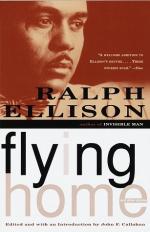|
This section contains 156 words (approx. 1 page at 300 words per page) |

|
As a student at Tuskeegee University, Ellison read the works of those writers who most influenced young writers of the 1930s: T. S. Eliot, Ernest Hemingway, James Joyce, Ezra Pound, W. B. Yeats, Joseph Conrad, and Gertrude Stein. For Ellison, The Waste Land (T. S. Eliot, 1922) was an impetus to write, and he later described reading Hemingway's Spanish Civil War dispatches, which he admired for their style, especially their vivid descriptions of scene and action. John Callahan observes that "A Hard Time Keeping Up" is almost a reversal of the action in Hemingway's "The Killers" (introduction to Flying Home and Other Stories). The influence of Joyce can be seen most directly in the unpublished story "A Storm of Blizzard Proportions."
The most important philosophical influences, though, were Richard Wright and Edmund Wilson. In fact, Wright not only was Ellison's longtime friend and literary advisor, but he...
|
This section contains 156 words (approx. 1 page at 300 words per page) |

|




